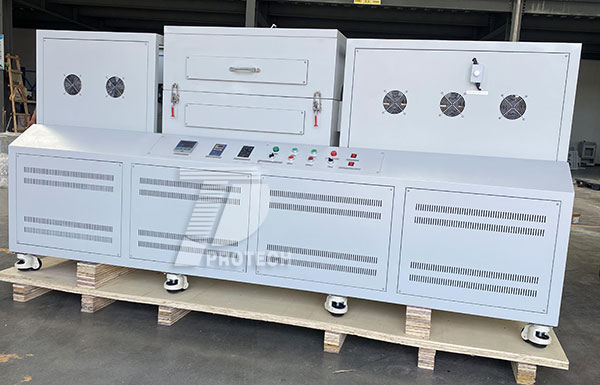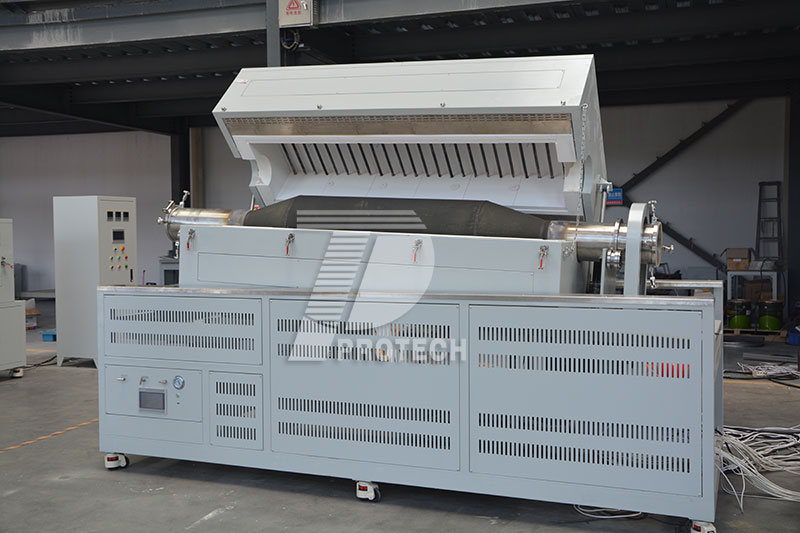


NEWS
Rotary furnace (hereinafter referred to as rotary furnace) is a thermal equipment for calcining, roasting or drying granular and powdery materials, widely used in the battery industry, material research in university research institutions, ceramic industry, chemical industry and other fields. Choosing a suitable rotary furnace requires considering multiple factors. Let's take a look at the important things to know when choosing a rotary furnace!

Stainless steel rotary furnace (click on the image to view product details)
1. Clear requirements
Purpose: To determine the specific use of the rotary furnace, such as sintering of positive and negative electrode materials for batteries, calcination of granular materials, etc. Different uses have different specifications and performance requirements for rotary furnaces.
Output: Determine the output of the rotary furnace based on production demand. Insufficient output may lead to low production efficiency, while excessive output may result in energy waste and increased costs.
Material characteristics: Understand the properties of the material, such as particle size, humidity, melting point, etc., in order to select the appropriate type of rotary furnace and heating method.
2. Assess equipment performance
Lining material: Select high-quality lining materials to improve equipment durability and production efficiency. The lining material should be able to withstand high temperatures and material erosion.
Heating speed: Choose a rotary furnace that can quickly heat up to reduce production time and costs. The heating speed depends on the type, quantity, and layout of the heating elements.
Temperature control: Modern rotary furnaces are usually equipped with good temperature control systems, which can accurately control the temperature inside the furnace, ensuring the stability and controllability of the production process.
Atmosphere control: Select a rotary furnace with atmosphere control function based on material properties and process requirements. Atmosphere control can ensure that the furnace maintains an oxidizing, reducing, or neutral atmosphere to meet different process requirements.
Sealing performance: Good sealing performance can prevent gas leakage from the furnace and external gas invasion, ensuring the stability and safety of the production process.
3. Consider equipment specifications and layout
Furnace size: Choose the appropriate furnace size based on the amount of materials and heating requirements. The furnace size should be large enough to accommodate the required materials and ensure that the materials are uniformly heated inside the furnace.
Tilt angle: The tilt angle of the rotary furnace has an impact on the movement of materials and heating effect. Choosing the appropriate tilt angle can ensure smooth movement of materials in the furnace and sufficient heating.
Drive device: Choose a reliable drive device to ensure smooth operation of the rotary furnace. The driving device should have sufficient torque and speed to meet production requirements.
4. Evaluate manufacturers and services
Manufacturer strength: Choose a rotary furnace manufacturer with strength and experience to ensure the quality and performance of the equipment. The strength of a manufacturer can be evaluated by examining their production workshop, testing equipment, and technical team.
After sales service: Choose manufacturers that provide comprehensive after-sales service to ensure timely technical support and maintenance during use. Good after-sales service can ensure the long-term stable operation of equipment.
5. Consider safety and environmental requirements
Safety measures: Ensure that the rotary furnace has necessary safety measures, such as emergency shutdown devices, temperature alarm devices, etc. These measures can promptly shut down the equipment in case of malfunctions or abnormal situations, protecting the safety of the equipment and operators.
Environmental requirements: Choose a rotary furnace that meets environmental requirements to ensure that the exhaust emissions during the production process meet national standards. You can choose a rotary furnace equipped with dust removal facilities and exhaust gas treatment devices to reduce environmental pollution.

Variable diameter rotary furnace (click on the image to view product details)
In general, selecting a suitable rotary furnace requires consideration of multiple factors, including clear requirements, equipment performance evaluation, equipment specifications and layout considerations, manufacturer and service evaluation, as well as safety and environmental requirements. By carefully analyzing and comparing different brands and models of rotary furnaces, one can find the equipment that is more suitable for their needs.Click to learn more rotary tube furnaces! Or click on online customer service to learn more about product information!
Leave A Message